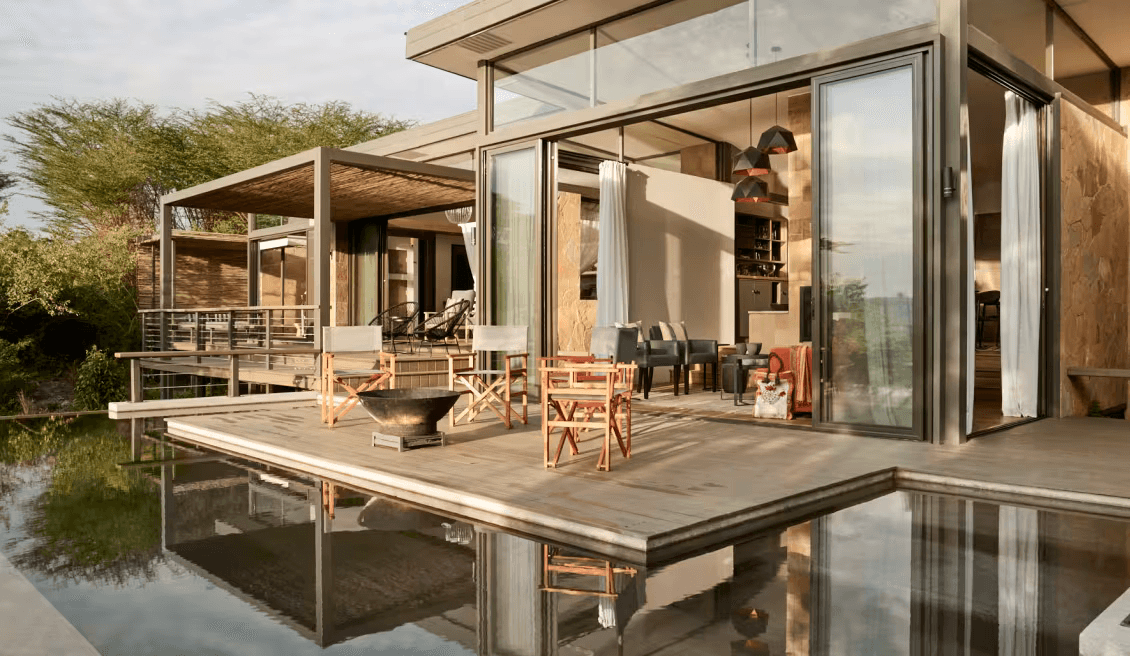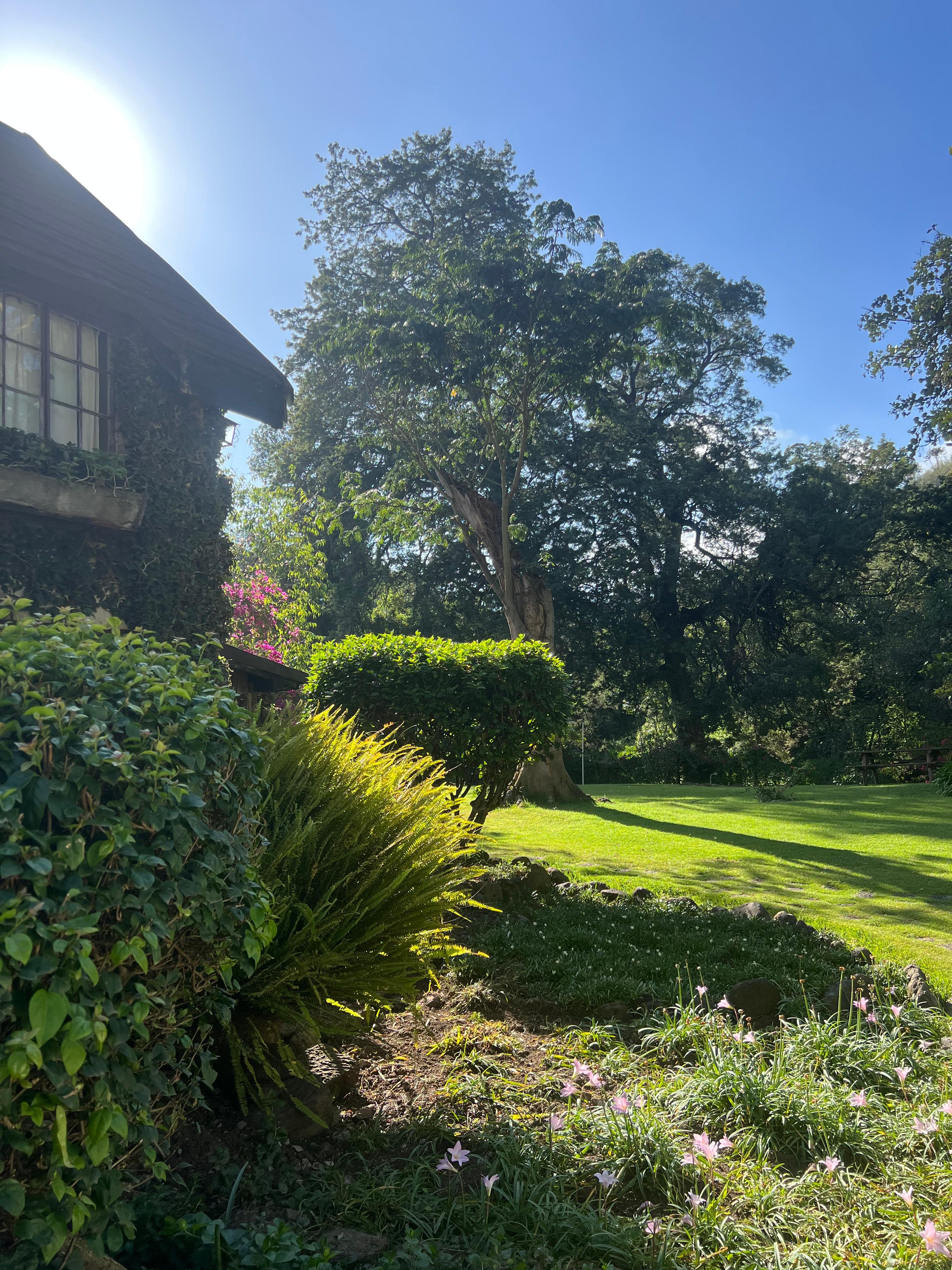INSPIRATION
A Walk With Black Rhinos
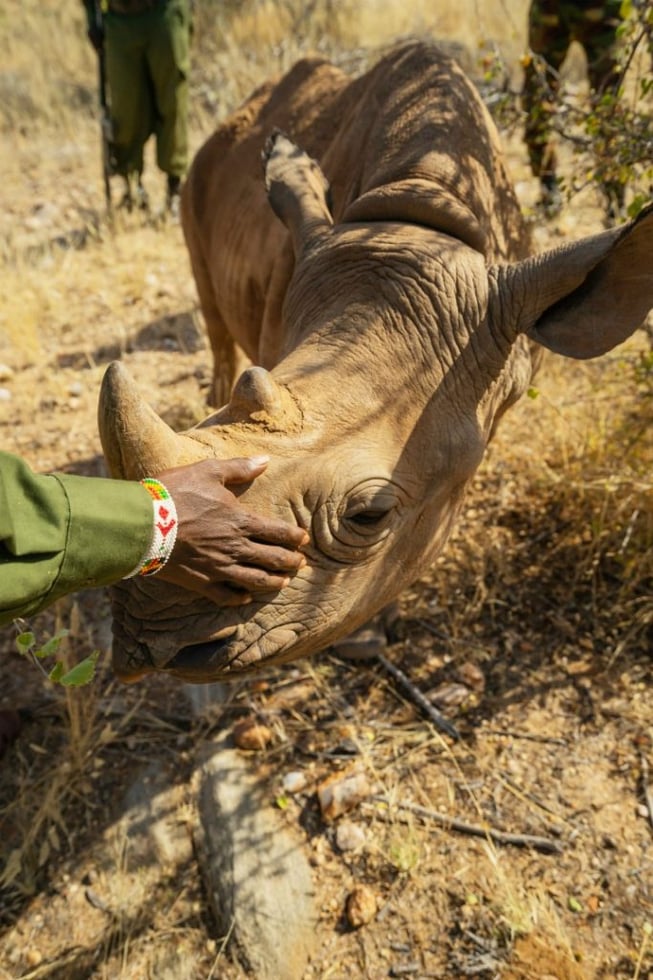
Much like gorilla trekking in Rwanda, tracking black rhinos on foot in Sera Conservancy should be on everyone’s bucketlist, writes Wendy Watta.
Photos by Brian Siambi
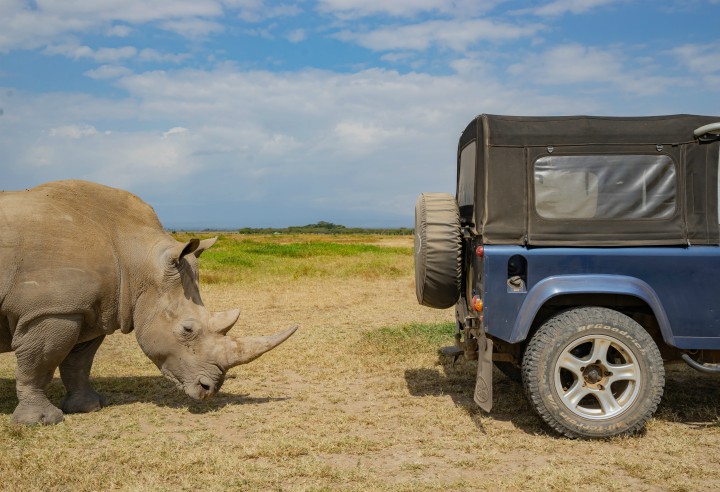
The ranger comes to a halt and lifts the GPS transmitter a little above his head, and we all listen with bated breath for a signal being sent from the microchip implanted in the horn of the black rhino we have been tracking for the past half hour. Joseph- our Samburu guide- shakes a small cloth dispersing ash particles into the air, a method that was traditionally used in the bush to tell wind direction in order to keep one’s natural scent away from the rhino’s strong olfactory sense.
He motions for us to keep moving forward and our procession of three elite anti-poaching rangers, myself and Brian who’s wielding a camera follow in a single file like nursery school children at a zebra crossing. The rangers’ tough black leather boots effortlessly trample the thorns and hard terrain as they tear through the prickly commiphora bushes with ease. “Umm…I think I wore the wrong shoes,” I mutter to myself glancing at my sneakers, careful not to say this out loud so as not to seem like a wuss. Joseph is on the other hand wearing sandals and other than a slight natural wobble in his gait, hardly seems fazed by the thorns. Through shrubs and up boulders, I charge on at pace.
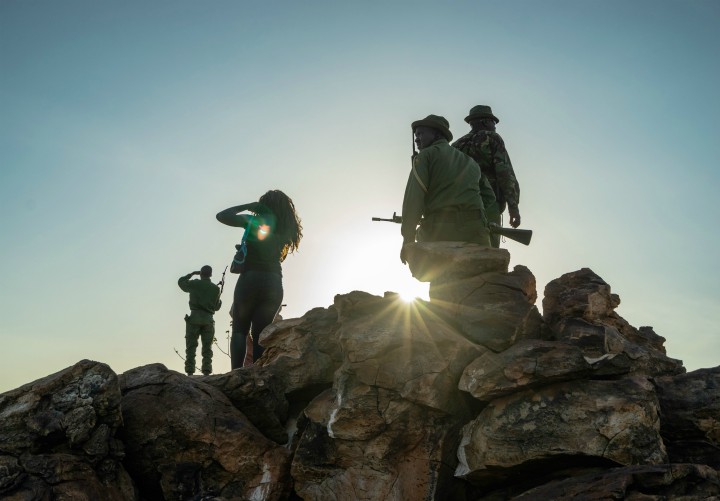
Suddenly, he freezes and his right hand shoots into the air, commanding us to stop. He seems to be peering at something in the thicket further ahead. He gestures for me move forward as silently as possible. With Pink Panther stealth, I try to inch closer but dry grass and brittle twigs crackle noisily under my feet, and I might as well have been blaring music on a stereo because about 60 metres away following Joseph’s gaze and pointed finger is a mother rhino and calf browsing away among the shrubs. While their rough grey skins camouflage seamlessly into the surroundings, up close, these creatures are magnificent! I feel a cough forming at the back of my throat. The black mother rhino is almost as tall as me with even higher horns, and it easily weighs almost 900kg. Earlier, I had asked if given its weight, it could actually catch up to me in a race, to which one of the rangers solemnly informed me that it can charge at up to 55km/h. I dare not cough.
The sun is searing hot despite it being only mid-morning. I lift a finger to wipe sweat off my brow, and thankfully, we had been informed earlier that these animals do not have good sight. Shortly after, the spell is broken: Brian lifts up his camera to take a couple of pictures, a ranger shifts his weight onto the other foot and I move forward crackling more brittle twigs, to which the duo wander off in the opposite direction.
Because rhinos tend to sleep during the scorching heat of the day, we set off to track them at about 6:00am. We are in the community owned Sera Conservancy and this is the first time black rhinos are back in their habitat in the North after 30 years, following a translocation. There is now a population of 13; 10 adults with three calves (one having been born in January 2018) with at least two more suspected pregnancies. For visitors, one is almost guaranteed a sighting with the highest number on record being six in one session.
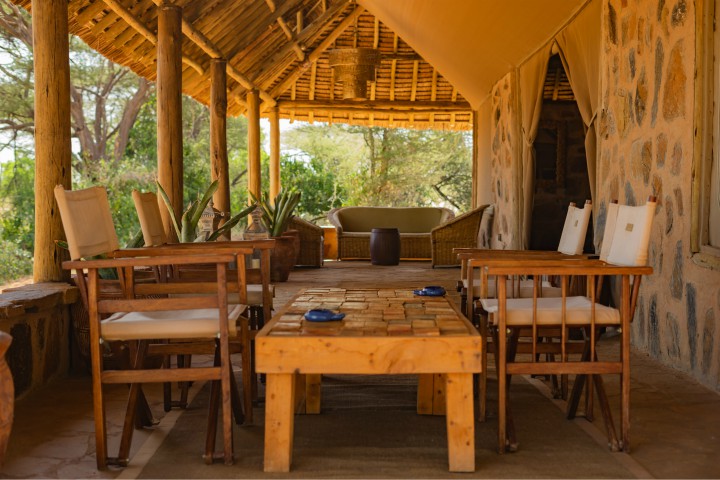
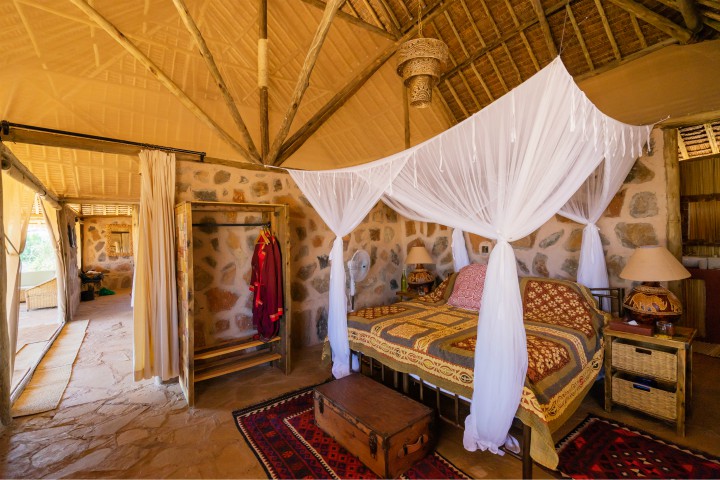
For accommodation, we are set up at the luxury Saruni Rhino camp, a first in the conservancy. It is nestled amidst towering doum palm trees surrounded by brown sand, and for a minute there while taking a dip in the surprisingly cold infinity pool complete with colourful lounge beds and overlooking a ‘lugga’ (dry riverbed) of the seasonal River Kauro, I think I am back in Zanzibar. This is more like a beach resort than a camp in the arid North! The property also overlooks a waterhole which often attracts the Samburu special five; Grevy’s zebra, reticulated giraffe, East African oryx and gerenuk. On busy days in the wild, this natural television is best tuned into from the cosy depths of a hammock bed strung up between two trees.
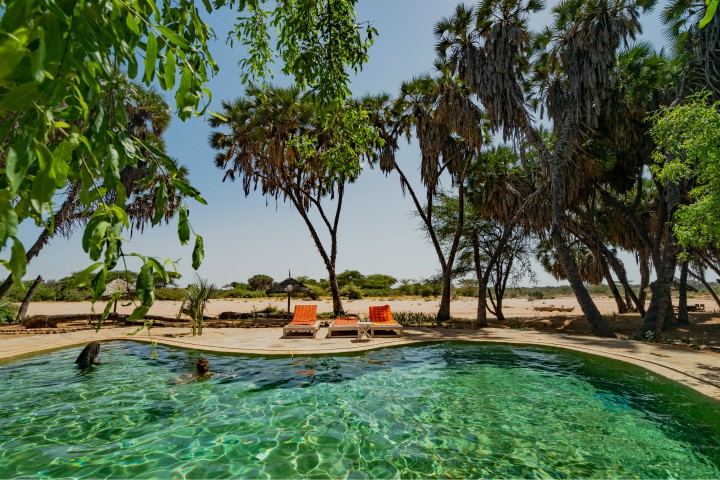
Saruni Rhino is as boutique and intimate as it gets, with three bandas (two doubles and one family) that can sleep up to four guests. Our two bedroom half stone, half canvas banda is aptly designed in rustic country-chic fashion, making for the perfect abode.
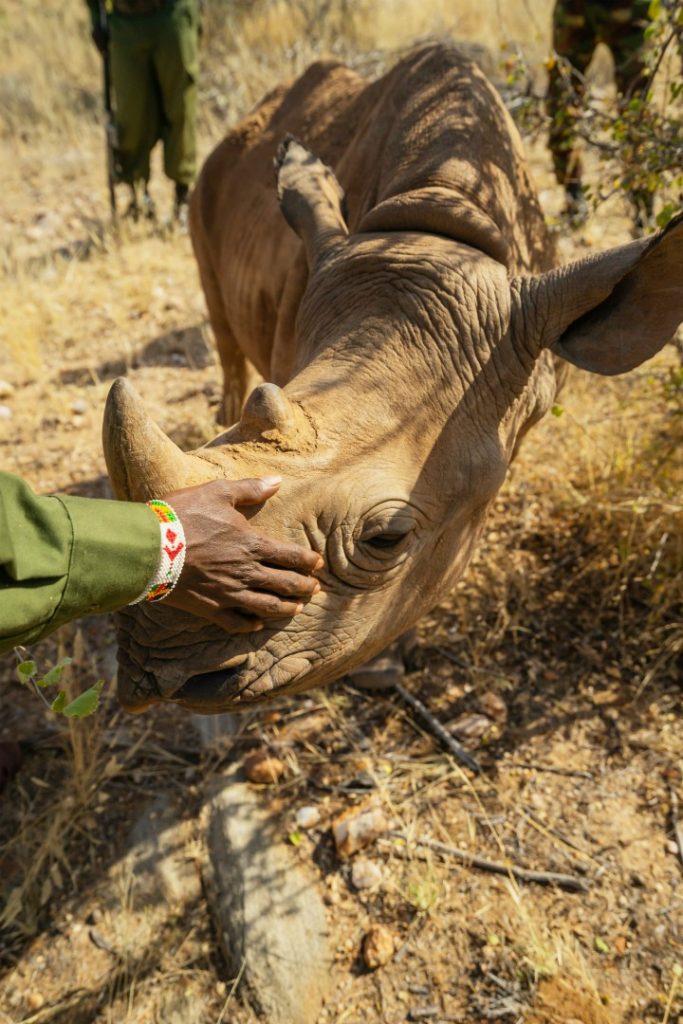
Tracking black rhinos on foot at Sera is a unique and thrilling experience that allows wildlife lovers to contribute to the protection of these critically endangered species. Our walking safari was crowned by a bush breakfast, after which we headed to the wildlife sanctuary to visit calves that were either orphaned or had been abandoned by their mothers. Since it was not feeding time, however, we missed that action. Instead, we set off on another short walk to see a calf called Loijipu up close, and under supervision, were even able to pet its tough dry skin. It was quite approachable, with me being more wary of it than it seemed to be of me. Still, I had been instructed to leave behind my red maasai shuka because as amiable as things were, this was still the wild after all.
Discover More Conservancies and Organisations Dedicated to Conservation
Our Top Experiences
SEEN SOMETHING YOU LIKE?
Enquire now and our team will create a custom itinerary tailored to your preferences.

CONTACT
enquiries@nomad.africa
Tel: +254 708 238 738
Purple Nomad Ltd
PO Box 69671 - 00400
Mwanzi Avenue, Nairobi, Kenya
